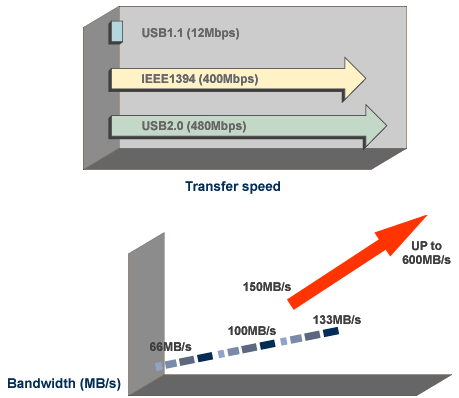USB provides an expandable, hot-pluggable Plug and Play serial interface that ensures a standard, low-cost connection for peripheral devices. Devices suitable for USB range from simple input devices such as keyboards, mice, and joysticks, to advanced devices such as printers, scanners, storage devices, modems, and video conferencing cameras. Migration to USB is recommended for all peripheral devices that use legacy ports such as the PS/2, serial, and parallel ports.
USB 1.0/1.1 support data transfer at up to 1.5 Mbps for low-speed devices and up to 12 Mbps for full-speed devices. Microsoft, HP, Compaq, Intel, Agere, NEC and Philips are seven core members of USB-IF to have worked on USB 2.0 standardization. USB 2.0 will support up to 480 Mbps for high-speed devices. USB 2.0 is suitable for high-performance devices such as high-quality video conferencing cameras, high-resolution scanners, and high-density storage devices. In addition, USB 2.0 supports old USB 1.0/1.1 software and peripherals, offering impressive and even better compatibility to customers.
